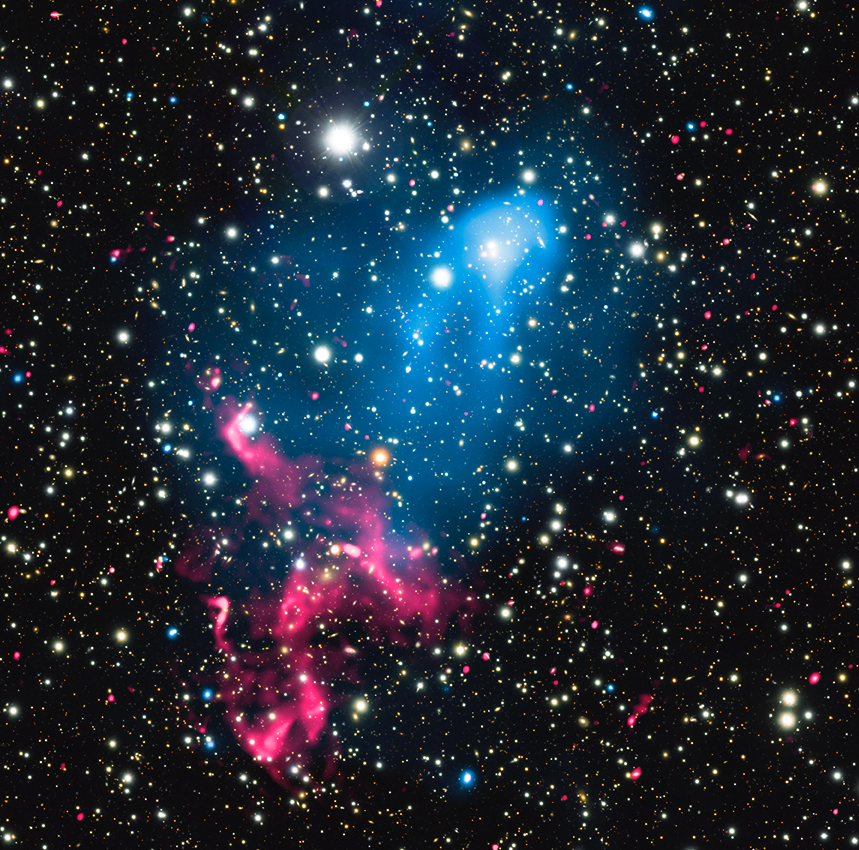
Credit: X-ray: NASA/CXC/SAO/R. van Weeren et al; Optical: NAOJ/Subaru;
Astronomers combined data from NASA’s Chandra X-ray observatory, the Giant Metrewave Radio Telescope (GMRT) in India and other telescopes to study what happens to matter that is swept up by the merger of two colliding galaxy clusters.
Galaxy clusters are the most massive structures in the Universe, weighing about a quadrillion (a million billion) times the mass of the Sun and in this case two of them, named Abell 3411 and Abell 3412, located about two billion light years from Earth, linked together in the same system.
During the collision, at least one spinning, supermassive black hole (SMBH) located in one of the clusters, produced a rotating magnetic funnel. The electromagnetic fields associated with this structure, accelerated some of the inflowing gas (gas that was falling towards the event horizon of the black hole) away from the vicinity of the black hole in the form of an energetic jet. The particles in the jet when then accelerated again when they encountered shock waves that were produced by the collision of massive gas clouds within the galaxy clusters. Astrophysicists found that these particles that are among the most energetic particles observed in the Universe, produce giant swirls of radio emission.
William Dawson, co-author of the relevant study said that “This result shows that a remarkable combination of powerful events generate these particle acceleration factories, which are the largest and most powerful in the Universe”.
This discovery solves one of the mysteries related to galaxy clusters regarding the origin of beautiful swirls of radio emission that stretch for millions of light years.
